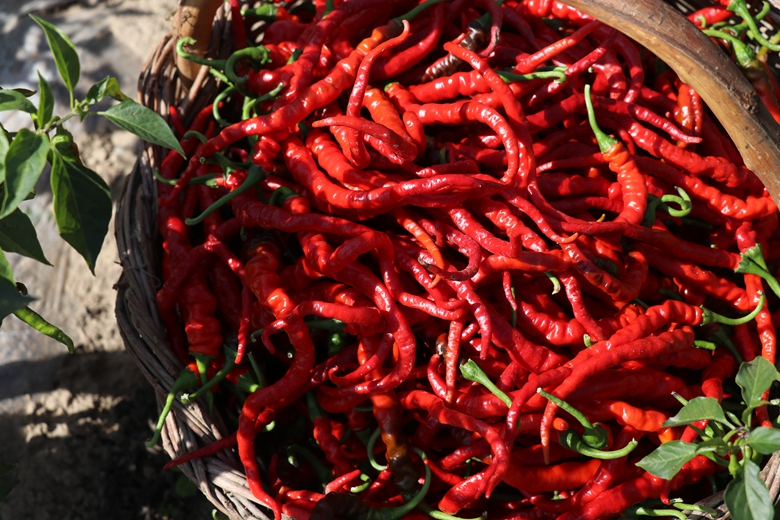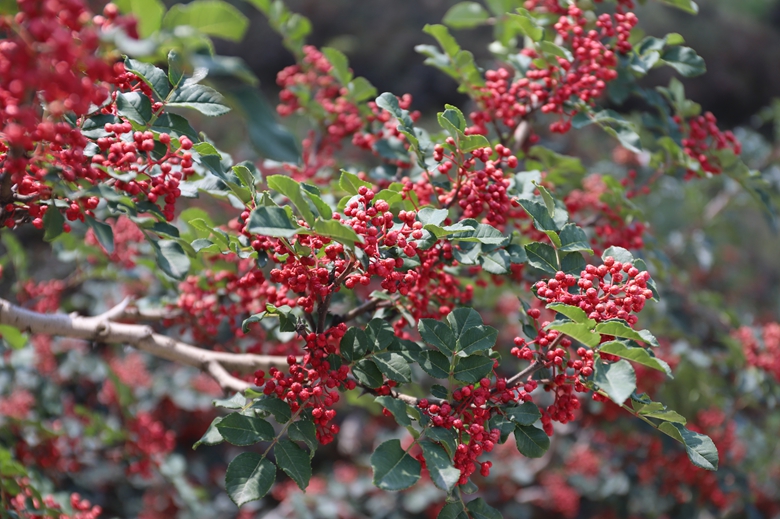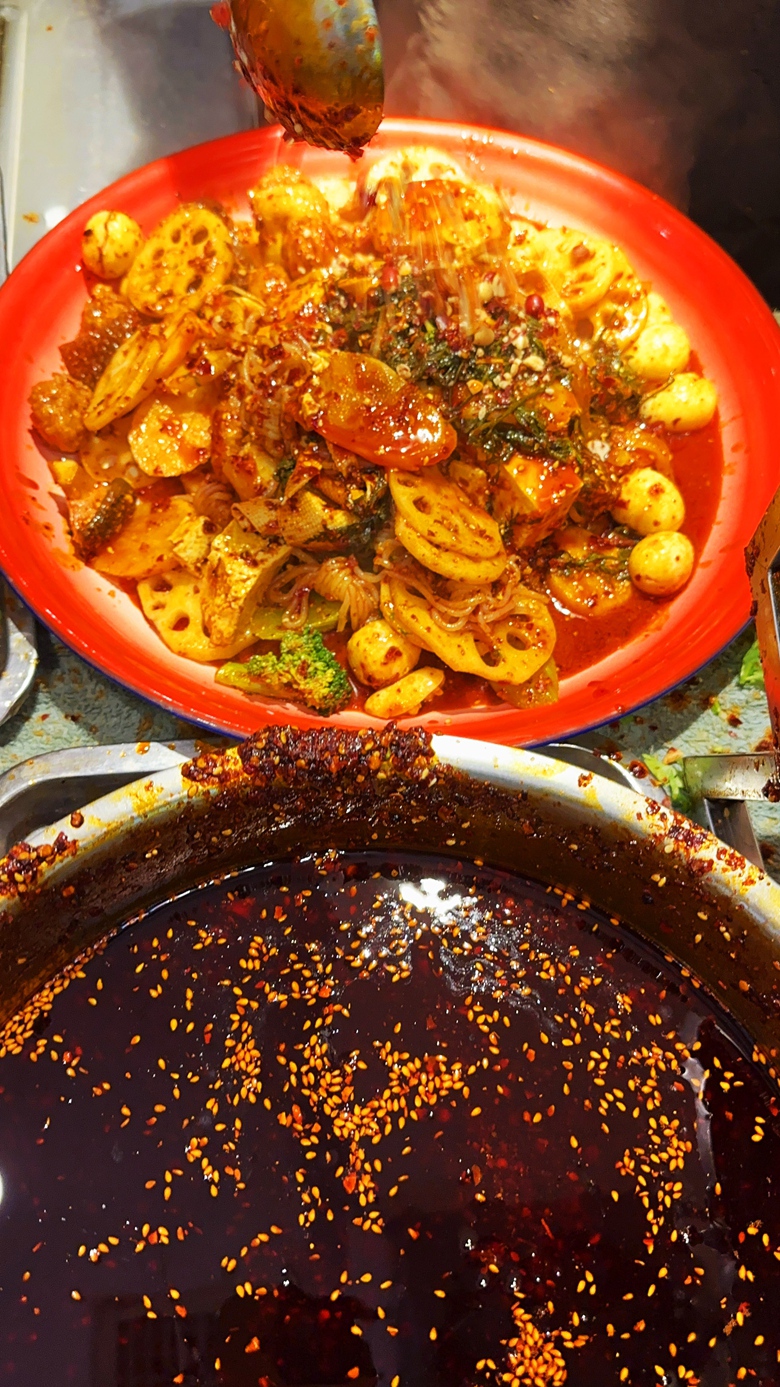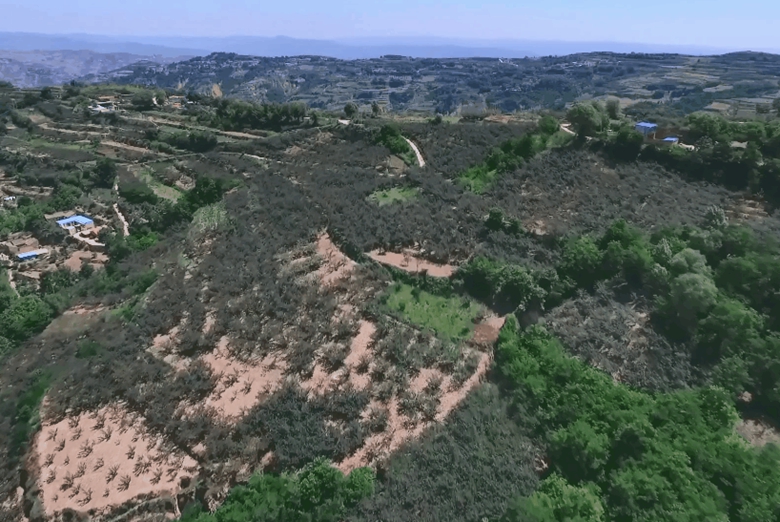Chili, Sichuan peppers fuel Tianshui malatang's unique flavor
Tianshui malatang, the numbing-spicy hotpot from Tianshui city in northwest China's Gansu Province, has quickly gained popularity this spring. The secret behind its unique flavor lies in the combination of chili pepper and Sichuan pepper.

Photo shows chilis produced in Gangu county, northwest China’s Gansu Province. (Photo provided to People's Daily Online)
The iconic dish typically includes hand-pulled noodles and a variety of vegetables. The preparation begins by blanching the selected assortment of vegetables in the broth. Seasonings such as salt, peppercorn powder, and garlic are then added, along with a ladle of the broth. A few spoonfuls of hot chili oil, primarily made from dried chili peppers from Gangu county in Tianshui, are poured over the dish, and everything is stirred together. The aromatic chili oil is delicious without being overpowering. The final touch involves topping the dish with chopped scallions, cilantro, and crushed peanuts, creating an irresistible temptation.
Gansu's abundant Sichuan pepper resources guarantee the flavor of the numbing-spicy hotpot. In 2022, Gansu was home to nearly 2.49 million mu (166,000 hectares) of land planted with Sichuan peppers, yielding 74,800 tonnes of the spice.

Photo shows Sichuan pepper trees in Gangu county, northwest China’s Gansu Province. (Photo provided to People's Daily Online)
Gangu, situated in southeastern Gansu, is a prime location for vegetable production due to its abundant sunlight, fertile soil, and significant daily temperature variation. The county also serves as one of the largest distribution hubs for Sichuan peppers in southeast Gansu, with an annual trade volume of 20,000 tonnes. Additionally, high-quality Sichuan peppers are extensively cultivated in various regions, including Wudu district of Longnan city, as well as Maiji district and Qin'an county in Tianshui.
In 2023, Gangu's total cultivation area for chili peppers reached 56,000 mu, resulting in an annual production of 130,600 tonnes and an output value of 369 million yuan ($51 million).

Photo shows chili oil and malatang. (Photo provided to People's Daily Online)
Since early autumn, the sight of drying chili peppers and Sichuan peppers in front of houses has created a unique landscape across Gangu. While Sichuan peppers are spread out and sun-dried directly on the ground, chili peppers are meticulously strung together on ropes and hung on racks that can reach up to 3 meters in height. Each string of fresh chili peppers can measure an impressive 2 meters in length and weigh over 20 kilograms.

Photo shows a chili pepper growing area in Gangu county, northwest China’s Gansu Province. (Photo provided to People's Daily Online)
In the past, the process of grinding chili peppers into powder relied heavily on manual labor, utilizing traditional tools such as stone mortars and stone mills. However, with the advent of modern technology, the integration of mechanization and traditional methods has significantly improved processing efficiency while maintaining the quality and flavor of the chili powder.
The explosive popularity of Tianshui malatang has profoundly impacted sales of chili pepper powder and Sichuan peppers. The peak daily sales volume of chili pepper products from Gangu has skyrocketed to 17,200 kilograms. Similarly, demand for Gangu's Sichuan peppers has soared, with daily sales ranging from 25,000 to 30,000 kilograms.

Photo shows chilis produced in Gangu county, northwest China’s Gansu Province. (Photo provided to People's Daily Online)
Photos
Related Stories
- Chili peppers bring wealth to Bohu in NW China Xinjiang
- Chili peppers generate wealth for county in NW China's Shaanxi
- Chili peppers enter harvest season in SW China's Guizhou
- Chili peppers become “hot” commodity driving a prosperous industry in Zunyi, China's Guizhou
- County in NW China’s Xinjiang embraces harvest season for chili peppers
Copyright © 2024 People's Daily Online. All Rights Reserved.









